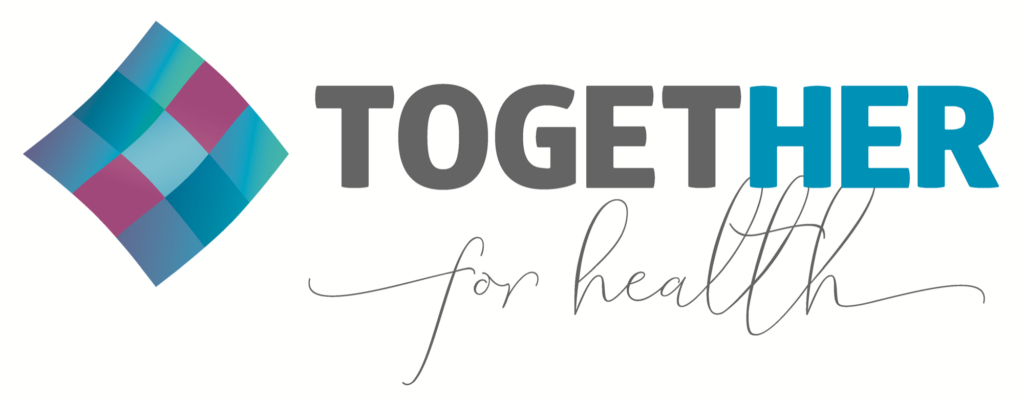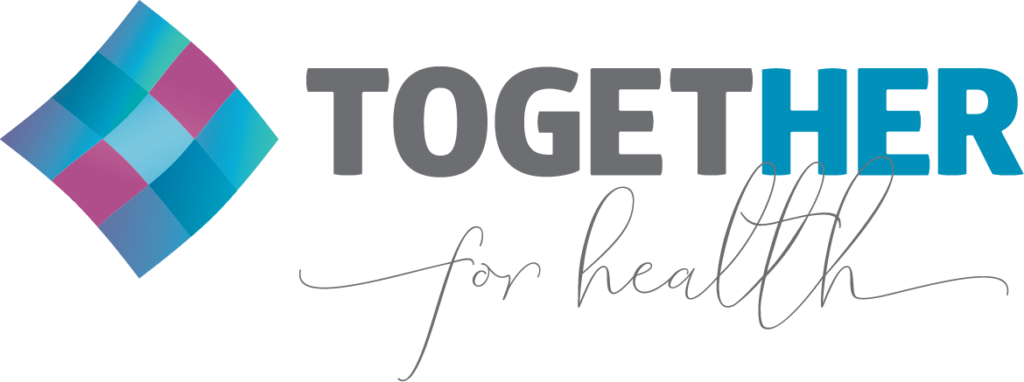Be a Cervical Cancer Champion, TogetHER Urges New UNAIDS Exec Director
21 August 2019 – TogetHER and our partner organizations were honored to receive a very encouraging and almost immediate response to the letter we sent yesterday to newly appointed UNAIDS Executive Director Winnie Byanyima, in which we offered congratulations and urged her to to include cervical cancer prevention among the priorities for her tenure.
“I am very much in listening mode as I prepare to take up my functions at UNAIDS and thank you for your suggestion to make cervical cancer prevention a signature issue and sharing the detailed background on the issue,” Ms. Byanyima wrote. “I fully agree that we need holistic approaches to health that look at the whole person and all the issues they could face. The integration of cervical cancer and HIV prevention is so important and clearly we need to do much more to ensure all women can access screening and treatment.”
Ms. Byanyima closed by noting she looks forward to continued collaboration, and to meeting with us.
Read the full text of TogetHER’s letter below, or click here to download it.
20 August 2019
Ms. Winnie Byanyima
Executive Director, UNAIDS
Dear Ms. Byanyima:
We offer warm congratulations on your appointment as UNAIDS Executive Director, as the partners of TogetHER for Health, a global partnership fighting cervical cancer. TogetHER’s organizational partners work collaboratively around the world to increase women’s access to evidence-based cervical cancer prevention and treatment programs. We are thrilled to learn of your appointment, and confident that your leadership in advocating on behalf of marginalized people is the foundation for great success in this position. We wish you all the best in this vital role as Executive Director.
As you consider the priorities for your tenure, we urge you to make cervical cancer prevention a signature issue.Cervical cancer is a tragically common source of death among women living with HIV, although it is preventable and treatable. Cervical cancer devastates families and communities, undermines hard-won gains against HIV, and diminishes the value of donors’ investments in HIV and AIDS prevention, care, and treatment.
UNAIDS has already demonstrated strong leadership on cervical cancer, and we believe your championship would be transformational as we work together to end cervical cancer deaths among women living with and vulnerable to HIV. We already have effective and inexpensive tools for cervical cancer prevention, which cost a fraction of ART, yet women do not receive adequate access to screening and treatment.
In 2018, WHO Director-General Dr. Tedros Ghebreyesusmade a global call to eliminate cervical cancer, which has directed energy and attention to this vital need. Cervical cancer as a global development challenge will be front and center over the coming year as WHO prepares to approve the new global elimination strategy at the May 2020 World Health Assembly, and UNAIDS has an opportunity to be at the forefront of the movement toward elimination. Additionally, on the verge of the 2019 UN High-Level Meeting on universal health coverage, and presentation of the Global Action Plan for achieving the health-related Sustainable Development Goal targets, there is an opportunity for UNAIDS to establish cervical cancer prevention firmly in the context of other health care offerings like HIV services.
Cervical cancer is a critical issue for UNAIDS
HIV and cervical cancer are closely linked. Cervical cancer is the most common cancer among women in 38 low- and middle- income countries, mainly in sub-Saharan Africa.[1]It kills an estimated 311,000 women worldwide each year,[2]the majority of whom live in the same low-resource settings where HIV continues to disproportionately affect women and adolescent girls. HIV and cervical cancer are both effectively preventable, yet they maintain their power to destroy lives in places where access to health care services are severely limited.
Furthermore, women living with HIV are particularly biologically vulnerable to cervical cancer. They are at least five times more likely to develop cervical cancer (an AIDS-defining illness) than their HIV-negative peers, and they have twice the risk for death from invasive cervical cancer within three years compared to HIV-negative women.[3],[4] Women living with HIV are also susceptible to cervical cancer at younger ages than HIV-negative young women.[5],[6]
As evidenced by the elimination strategy that is scheduled for World Health Organization approval next year, cervical cancer is a winnable battle. While new and improved tools in the pipeline will accelerate our approach toward elimination, and should be introduced as they become ready, the world already has the tools on hand to prevent cervical cancer, and those must be urgently scaled up to avoid needless deaths.
Primary prevention of cervical cancer is achieved with the first of these tools: vaccination against human papillomavirus (HPV), the very common virus that can lead to cervical cancer. Adolescent girls—and boys—living with HIV must be reached with three doses of the HPV vaccine, rather than the standard two, to keep them safe from later developing and transmitting HPV-related cancers.[7]
Secondary prevention is possible by screening women and treating any precancerous lesions that would otherwise progress to cervical cancer. That procedure, which can be performed inexpensively in even the lowest-resource settings, is known as “screen-and-treat.” The tools for effective screen-and-treat cost around $10 per woman, and costs are decreasing. In addition, many new technologies are under development to improve the sensitivity of tools to test for HPV and cervical cancer.
Recognizing cervical cancer’s burden among women vulnerable to and living with HIV—and the tools available to UNAIDS to reduce that burden—your predecessor regularly spoke about the critical importance of cervical cancer prevention, and worked closely on this issue with First Ladies, ministers of health, PEPFAR, the Global Fund, and WHO. You can build upon this starting point and establish UNAIDS as a key champion for promoting effective cervical cancer prevention.
Funding is the primary challenge to cervical cancer prevention
Given the lack of technical obstacles to eliminating cervical cancer, the predominant challenge is funding for prevention programs, including those that focus on women living with HIV.
PEPFAR has been an early leader in funding cervical cancer prevention for women living with HIV, first through Pink Ribbon Red Ribbon and now with its Partnership to End AIDS and Cervical Cancer, of which UNAIDS is a member. The Global Fund also allows countries to use its AIDS funding to pay for screen-and-treat, although only a few countries have done so thus far.
Other international donors have begun to take an interest in cervical cancer, too. In 2019, UNITAID awarded a total of more than $70 million to the Clinton Health Access Initiative (CHAI) and Expertise France for efforts to increase access to HPV screening and cervical cancer diagnosis and treatment tools from 2019-2024, and to scale up use of new technologies.
The U.S. Agency for International Development (USAID) awarded around $10.2 million in 2019 to support cervical cancer efforts in Malawi and Mozambique from 2019-2021, and is looking to expand its programming.
There are a few other smaller sources of financing, but the reality is that there is very inadequate funding to meet this important need. TogetHER estimates that total annual development partner funding to address cervical cancer is around $30-50 million USD, which falls far short of the need for program scale-up. Your advocacy for increased donor attention to this issue could make a dramatic difference.
UNAIDS is in a critical position to take actions that will advance cervical cancer elimination
A focus on cervical cancer aligns well with several of UNAIDS’ strengths:
- Cervical cancer is a gender-specific disadvantage, and preventing it is in line with UNAIDS’ strong background in advancing gender equality.
- Just as UNAIDS has played a key role in promoting health equityfor people living with and vulnerable to HIV and AIDS, it can extend its health equity advocacy to those living with and vulnerable to cervical cancer. Overwhelmingly, cervical cancer deaths occur in low-resource countries.
- Like HIV, cervical cancer is highly stigmatized, and women are terrified of a cancer diagnosis that in many countries will lead to a near-certain painful death. UNAIDS has unique expertise in reaching people with health services in a way that decreases stigmaand can apply this to addressing the stigma around cervical cancer, too.
- UNAIDS not only nurtures close connections with WHO, Gavi, The Global Fund, and other United Nations partners, but it is also jointly cosponsored by other organizations whose constituencies are just as vulnerable to cervical cancer as they are to HIV – organizations like UNICEF, UNFPA, UN Women, and the World Bank. You can spark an interest among these cosponsorsto collaborate against cervical cancer, and urge each of them to take on greater responsibility.
- UNAIDS has nurtured strong networks of civil society representatives, and those grassroots advocates have elevated policymakers’ attention to issues around HIV and AIDS. UNAIDS can mobilize those networks to highlight the vulnerability to cervical cancer of women living with HIV.
- Several innovations to improve the response to cervical cancer are in the R&D pipeline, offering an opportunity for UNAIDS to showcase its focus on programmatic and technical innovationby embracing and championing new tools and processes to accelerate cervical cancer elimination.
Requested actions
TogetHER requests that you take the following actions in your capacity as Executive Director:
- Advocate for increased funding for cervical cancer:
- During Universal Health Coverage discussions, press other global health leaders to recognize the importance of adequately funding cervical cancer prevention activities in the context of basic health care services.
- For large bilateral donors focused on ending HIV and AIDS, increasing programs to prevent cervical cancer among their target populations should be a natural investment. UNAIDS can and must make that argument to those donors.In your discussions with representatives of governments that fund HIV and AIDS programs and other global development work at high levels, we ask you to stress the importance of allocating funding for cervical cancer in parallel.
- We need to increase funding beyond bilateral and multilateral funding.Encourage countries to directly fund cervical cancer prevention, and to produce and implement costed national strategies. Additional funding can and should come from foundations, the private sector, and national insurance programs.
- Instruct the UNAIDS Country Coordinators (UCCs) who serve on Global Fund country coordinating mechanisms (CCMs) to prioritize integration of cervical cancer into HIV and AIDS programs and other reproductive health programs for women living with HIV. Train UNAIDS representatives involved in drafting Global Fund proposals to effectively incorporate cervical cancer into proposals.
- Instruct UNAIDS country staff to activate the national networks of people living with HIV and AIDS to likewise be advocates for cervical cancer while serving on Global Fund CCMs. We have found the national networks to be wonderful allies, and so much could be done to increase their role in the fight against cervical cancer, a disease that so disproportionally affects their members.
- Task UCCs to regularly raise cervical cancer in their meetings with their Minister of Health, First Lady, and other key leaders.
- Encourage WHO’s efforts on cervical cancer elimination:
- Support WHO leaders as they champion cervical cancer elimination and encourage other international organizations to do the same—leading up to the approval of the WHO strategy at the 2020 World Health Assembly, and also in the implementation period that will follow.
- Urge WHO leaders to direct resources to countries specifically for cervical cancer activities. It is also imperative that WHO demonstrate its commitment to ending cervical cancer by using its leadership to request funding from member countries.
- Spark high-level discussions on cervical cancer:
- Position cervical cancer services as an essential element of Universal Health Coverage, just as HIV and AIDS services are. Note the benefits of integrating cervical cancer services into other health services, including primary health care, HIV and AIDS services, and sexual and reproductive health services.
- Mention the importance of the fight against cervical cancer in almost every speech you give, and instruct members of your leadership team to do the same.
- Include cervical cancer on an upcoming Programme Coordinating Board (PCB) agenda. The PCB may be expected to take note of the linkages between HIV and cervical cancer, and call for Member States and key donors to increase their investments to adequately address cervical cancer as part of a fully-funded global response to HIV and AIDS.
- Raise the issue of cervical cancer programming during your interactions with OAFLA leaders and First Ladies at all opportunities. Request that their meeting agendas include cervical cancer, and offer to co-host a joint conference on cervical cancer on the sidelines of an African Union meeting.
- Urge leaders of the International AIDS Society to place cervical cancer on the official agenda of the 2020 AIDS Conference. Designate UNAIDS as a cosponsor for a conference side event on the importance of addressing cervical cancer in the context of the HIV and AIDS response. TogetHER would be delighted to organize this event with UNAIDS.
- Consider naming a special UNAIDS envoy for cervical cancer, to continue to promote cervical cancer prevention.
- Join events, webinars and social media opportunities to highlight the fight against cervical cancer, and encourage your team to do the same.
- Encourage advocates to bring the same fierce energy to cervical cancer advocacy that they have always brought to advocacy around HIV and AIDS, making sure the issues receive attention.
- Encourage data collection:
- In all discussions about data collection, highlight that among its indicator set, UNAIDS requires countries to collect data annually on cervical cancer screening among women living with HIV. Urge country leaders to prioritize collection of data on this indicator.
- Encourage all health organizations to collect data and conduct research related to the links between cervical cancer and HIV and AIDS, to inform policies and budgets for targeted service provision.
- Nurture programmatic and technological innovation:
- National ministries of health are looking to UNAIDS’s new Health Innovation Exchange for guidance on technologies in which they can invest for greater health impact. Instruct your staff to highlight cervical cancer tools as good choices because they are easy to train for, use, and maintain.
- Initiate a review of the guidelines on the age at which women living with HIV should be screened for cervical cancer, in light of some countries’ policies to screen at an earlier age. There is some concern that the WHO recommendation of 30 years of age may be too late in countries with high HIV prevalence.
Conclusion: An opportunity awaits
Thank you for your consideration of TogetHER’s request to make cervical cancer prevention one of your signature issues as UNAIDS’ Executive Director. Your support can make a genuine and appreciable difference against the disease at a time when the world is embracing the goal of elimination, and identifying the elements of Universal Health Coverage. There is a critical need for high-level champions.
Your efforts will be buoyed by strong support from within UNAIDS. Many of your new colleagues have already been fantastic advocates in the fight against cervical cancer. You will also be building upon the groundwork laid by previous UNAIDS leaders. Michel Sidibe stated in October 2018, for example, that “All women living with HIV need access to information on HPV and should be offered cervical cancer screening and treatment if necessary,”[8]and he was a strong advocate to First Ladies for cervical cancer prevention.
Outside of UNAIDS, too, your support will place you in the company of other high-profile leaders like Dr. Seth Berkley, CEO of Gavi, who last year asserted that people should be “screaming for” every girl to be vaccinated against HPV,[9]and WHO Director-General Dr. Tedros Adhanom Ghebreyesus, who in June 2019 called cervical cancer elimination “an achievement that will pay huge dividends not just in terms of lives saved, but in terms of gender equality and the future of women and girls.”
We would welcome the opportunity to meet with you when you visit the United States, to discuss how we can support you and your colleagues in the fight against cervical cancer. You can reach TogetHER’s Executive Director, Celina Schocken, at [email protected].
If you will take the actions outlined above to raise the profile of cervical cancer and highlight the solutions that must be scaled up, you have the power to keep cervical cancer elimination prominent among the priorities of global health experts and policymakers, and to save the lives of millions of women. Please embrace the legacy of proud, loud AIDS activism and make sure that cervical cancer is addressed alongside HIV and AIDS.
Sincerely,
Cc: Dr. Seth Berkley, Executive Director, Gavi
Ms. Henrietta Fore, Executive Director, UNICEF
Dr. Tedros Ghebreyesus, Director-General, WHO
Dr. Natalia Kanem, Executive Director, UNFPA
Mr. Li Mingzhu, Commissioner of the National Health Commission, China
Mr. Peter Sands, Executive Director, the Global Fund to Fight AIDS, TB and Malaria
[1]Ginsburg, Ophira et al. The global burden of women’s cancers: a grand challenge in global health. The Lancet, Volume 389, Issue 10071, 847 860. http://www.thelancet.com/journals/lancet/article/PIIS0140-6736(16)31392-7/fulltext
[2]Bray F, Ferlay J, Soerjomataram I, Siegel RL, Torre LA, Jemal A (2018). Global Cancer Statistics 2018: GLOBOCAN Estimates of Incidence and Mortality Worldwide for 36 Cancers in 185 Countries. CA Cancer J Clin. https://onlinelibrary.wiley.com/doi/full/10.3322/caac.21492
[3]Grulich AE, van Leeuwen MT, Falster MO, Vajdic CM. Incidence of Cancers in People with HIV/AIDS Compared with Immunosuppressed Transplant Recipients: A Meta-Analysis. The Lancet. 2007; 370(9581): 59-67. http://www.thelancet.com/journals/lancet/article/PIIS0140- 6736(07)61050-2/abstract
[4]Osterweil, Neil. HIV infection linked with death from cervical cancer. IDPractitioner. 29 August 2016. http://www.idpractitioner.com/specialty-focus/hiv/single-article-page/hiv-infection- linked-with-death-from-cervical-cancer/6923c70ae864e34610b485df81e9d290.html
[5]Y. Mulenga, E. Lifuka, M. Kalufyanya, F. Malasha, M.P. Kieffer, A. Rurangwa. Prevalence of Cervical Dysplasia in HIV-positive Women Versus HIV-negative Women: The Case of Zambia. 9th International Workshop on HIV & Women, Seattle Washington, USA, March 2019.
[6]Giovanni Barillari, Paolo Monini, Cecilia Sgadari, Barbara Ensoli. The Impact of Papilloma Viruses, Matrix Metallo-Proteinases and HIV Protease Inhibitors on the Onset and Progression of Uterine Cervix Epithelial Tumors: A Review of Preclinical and Clinical Studies. Int J Mol Sci. 2018 May; 19(5): 1418. Published online 2018 May 9. doi: 10.3390/ijms19051418. https://www.mdpi.com/1422-0067/19/5/1418
[7]World Health Organization (WHO). Human papillomavirus vaccines: WHO position paper, October 2014. Wkly Epidemiol Rec. 2014; 89(43):465–92. http://www.who.int/wer/2014/wer8943.pdf
[8]UNAIDS. Cervical Cancer and HIV – two diseases, one response. 1 October 2018. https://www.unaids.org/en/resources/presscentre/featurestories/2018/october/cervical-cancer-and-hiv
[9]TogetHER for Health. Powerful Voices for Eliminating Cervical Cancer at UN Side Event. 28 September 2018. https://togetherforhealth.org/powerful-voices-for-eliminating-cervical-cancer-at-un-side-event/









